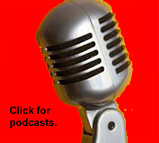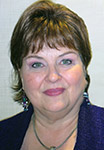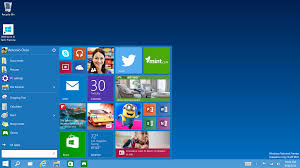|
|

| IWOC WELCOMES
New Member
Mark Wollemann
|
|
|
Am. Writers Museum
Some time back, Stet reported the exciting news that the American Writers Museum was to be located in Chicago. Well, they’re moving ahead, and on Tuesday, October 27, officials will hold a press conference to announce the space, share images of the exhibits, and answer questions. If you’re interested, the event – with continental breakfast -- will be held from 8 a.m. to 9:30 a.m. in the Washington Room at the Chicago Cultural Center, at the corner of Washington and Michigan Aves. 
|
EDITOR'S INTRODUCTION
Well, here it is October already, and we’re into the scary season: black cats crossing our paths with ominous intent; ghosts flitting about the neighborhood; floorboards creaking in the middle of the night; and lord knows what that shadow is behind the shower curtain. We all love the mock terror of Halloween because we know it isn’t real. It’s fun to be spooked by fake hobgoblins and the sudden appearance of Dracula, who looks suspiciously like the guy next door.
But there are some things we should actually be afraid of, and they’re often sitting right there on our computers. Staleness is one. Many of us writers consider ourselves generalists, but most work in one or two fields the majority of the time. Found a cliché or a phrase that worked well once? Are you still using it over and over? If the reader knows what’s coming before you’ve said it, you’ve outworn that word or phrase. (I make a game of muttering to myself what I think the next sentence will be, and too often I’m right.)
From time to time, we all need to work on refreshing our styles, checking the thesaurus for a better word (shift-F7 in MS Word), and in general, working a little harder to think outside our usual box. David’s excellent column this month talks about treating failure as a learning opportunity. I’m all for that, and I also feel as he does that writing is like music. It should have a meter to it. We shouldn’t just plow ahead doggedly plopping in the info that’s going into the assignment without regard to what it "sounds" like. copywriters and PR people know this, and we should take our cues from them. A little stacatto,some meaty passages, perhaps a bit of surprise, and so forth.
If you've had more one-off jobs than you care to think about, changing your writing style may be just the ticket, so don't be afraid to try it. As Wayne Gretzky said, "You’ll always miss 100% of the shots you don’t take."
That's your quote of the month. Happy Halloween!

— The Editor
|
OCTOBER MIXER PREVIEW
ILLINOIS WOMAN'S PRESS ASSOCIATION
 IWOCers and members of the Illinois Woman’s Press Association (IWPA) will meet, mingle, and munch on Tuesday, October 13 at The Hidden Shamrock, 2723 N. Halsted Street in Chicago. (That’s just a bit over three blocks from the Diversey stop on the Brown/Purple line.)
IWOCers and members of the Illinois Woman’s Press Association (IWPA) will meet, mingle, and munch on Tuesday, October 13 at The Hidden Shamrock, 2723 N. Halsted Street in Chicago. (That’s just a bit over three blocks from the Diversey stop on the Brown/Purple line.)
The buy-your-own-drinks plus bar food bash starts at 6:30 and runs until 8:30 or whenever we’ve told all the war stories we know.
There’s a special plus to this event too: We have a lot of authors in our midst, and if you’re one of them, here’s your chance to showcase your books to an appreciative audience. There will be a table for display of books from both IWOC and IWPA, and you’ll have a chance to chat about what you’ve written.
No charge for admission for IWOC members (but do preregister so we have a food headcount), and nonmembers pay only $10 with preregistration online or $15 at the door.
This meet-and-greet promises to be a ton of fun, so don’t miss it! 
— Joen Kinnan
SEPTEMBER MEETING RECAP
PROJECT A STRONG PRESENTATION IMAGE

Former radio news anchor, talk show host, and morning show side-kick Catherine Johns, author of Show Up and Shine: Simple Steps to Boost Your Confidence and Charisma, truly wowed IWOC members and guests at the September IWOC meeting with her dynamic talk, providing valuable tips on how freelance writers can improve their presentation skills.
“You know how to communicate as writers, as words are your thing,” she pointed out. “When it comes to communication, it’s important to make an emotional connection and match your words with your look and sound,” she added. “And that means having a powerful presence, which is what people see and feel when they’re around you.”
Johns told IWOC members and guests that making eye contact is crucial when giving a presentation. “There’s an energetic connection with your audience when you make eye contact with people,” Johns noted. “Your tone of voice is important, and it’s also important to have a strong message and deliver it well,” she added.
Johns then asked meeting attendees to sit up straight in their chairs, with the balls of their feet firmly planted on the floor. “The more you can be centered and grounded, the more energy you’ll have and the more present you’ll feel,” she pointed out to everyone. “When you’re in this quest to be present, your feet should be pointed straight ahead,” she noted.
Women, Johns stressed, sometimes keep their feet off the floor when they’re in meetings. They can be perceived as less than articulate when seated this way. On the other hand, men tend to spread out their bodies more, Johns pointed out. Women also tend to tilt their heads more frequently when expressing their thoughts, which is not a good idea if they want to be taken seriously, Johns emphasized.
Johns gave an example of a hospital executive she coached who tilted her head a great deal when she spoke and had a tiny voice that did not project a very professional image. “For women, especially,” Johns said, “their voices get tiny, and they don’t get taken as seriously. Everything starts with your feet planted on the floor. That will make the energy start to flow again,” she stressed.
What should you do with your hands when giving a presentation? You can use gestures to clarify, enumerate, and make points in other subtle ways, but “not too much,” Johns emphasized.
“Women will often finger a ring or necklace when giving a presentation, whereas men will jingle the change in their pockets, which is not good,” Johns said. “Don’t use aimless gestures, as it looks like you’re nervous and tense,” she noted. “When using your hands, you want your hands up, not behind your back, and your fingers should be together,” Johns stressed.
Toward the end of her talk, Johns had members and guests stand up one at a time and clearly state their first and last names to the rest of the audience. This exercise was performed so that attendees could demonstrate their powerful presence – a crucial component of John’s presentation.
— Karen Schwartz
PRESIDENT'S COLUMN
SEEING FAILURE AS AN OPPORTUNITY TO GROW

A few weeks ago I was reminded of the importance of failure. I was sitting with a group of science writers after a tour, and they began talking of their transition from the formal study of science to science writing. It was not the first time I met people whose first choice of career proved dreary once they realized its boundaries. I have met people who earned master’s degrees or Ph.D.’s in some scientific discipline only to find they didn’t want to spend their lives in a room and focused on one subsection of a subtopic of knowledge. I’ve met people who earned law degrees and decided they didn’t care for the practice of law. (And in some cases, we should all be thankful they didn’t.)
I also recall reading about a chemistry professor whose students came to him with experiments that worked perfectly, and he would say, “That’s terrible!” His point was that we don’t learn much from success. I remember trying to precipitate something in a chemistry lab one day, but instead of the expected result, I held a cloudy beaker full of mystery. The class was too short for me to delve into why that happened, so I will never know what wonderful lessons I missed in that small failure.
I hope you’re more practiced at failure than the current crop of presidential candidates whose lives, as they tell it, are a string of achievements that make a Disney movie look gritty by comparison. Of course the rest of us know that's bunk. A recent public radio piece talked about technology companies trying to start up in Georgia, and as interviewees discussed financing, someone mentioned Silicon Valley where investors believe people aren’t truly primed for success unless they’ve failed a couple of times. The idea, of course, is not failure for its own sake. The important part is what you learn about yourself, your goals, and your strategies when you fail.
If your business seems to have plateaued, ask yourself whether you have failed enough lately? Yes, freelance writing can seem like an unending primer for success. Some days you feel that you’ve been primed for so long that an armored car should back up to the front door and dump the load of money you’re due. But there are also smaller failures that can be described as a failure of attention. Does your writing need a refresh, and has it become a limp, ambivalent thing because you have failed to examine your habits? I don’t suggest giving a client haiku instead of prose, but have you worked at varying the rhythm of your sentences to reveal the music in the words? Have you scrutinized your sentences to cull the adverbs that make writing as strong as instant pudding? What if you made a conscious effort to replace every piece of jargon with a more understandable phrase in colloquial English? I dealt with reporters who would repeat police jargon verbatim, describing a gunshot wound as “in the chest area,” which, if you think about it, doesn’t make sense because the wound was either in the chest or it wasn’t.
Perhaps you need to explore a new area of business. IWOC offers a lot of opportunities for you to meet new people and learn about their needs. One of those comes along Oct. 13 when we have a mixer with the Illinois Woman’s Press Association. A more exotic opportunity happens on Oct. 24 at the Halloween gathering of artists (http://www.chicagoculturalmile.org/gathering/) sponsored by the Chicago Cultural Mile Association. IWOC will have a table, and we’re working on an interactive game, which is one of the requirements. Journalists in particular are invited to participate, so any of you who pursue that craft, as I do, please attend or help staff our table. Maybe this will be a boon to us, or maybe it will be a failure. We won’t know unless we give it a try.
Show a cat a box, and the cat will twist itself almost inside out to fit in that box. Reminds you of humans, doesn’t it? Boxes can be very comfortable with their defined boundaries. But if we behave like cats we don't learn, nor are we prepared for the next opportunity that comes along. So in contrast to all those business columns and business books that promise an easy path of 10 no-risk steps that leads straight to success, I say this: Let’s go fail. 
— David Steinkraus
DID YOU KNOW?
ARE YOU AFFLICTED WITH PLEONASMS?
CALL YOUR EDITOR, NOT YOUR DOCTOR
|
|

The pleonasm is either the editor’s scourge or a literary device that adds emphasis: take your pick. Pleonasm (PLEE-uh-naz’m) is derived from a Greek word meaning “excess.” It is the use of extra or redundant words to express an idea.
Some phrases that are unapologetically pleonastic include unexpectedly without warning, completely eradicate, and simultaneously at the same time. Lawyers love to use them. Consider any and all; aid and abet; save and except; sole and exclusive; null and void; terms and conditions; cease and desist; and various and sundry. If people need your PIN number, offer you a tuna fish sandwich, or ask you to please RSVP, they are definitely using pleonasms.
John McIntyre, a respected copyeditor at The Baltimore Sun has written that pleonasms occasionally have their place. Consider “This was the most unkindest cut of all” from Bill Shakespeare’s Julius Caesar, or the old Raid ad slogan “Kills bugs dead.” But most of the time, pleonasms are errors.
See if you can spot the pleonasms in the following sentences:
1. When Trump first announced his candidacy, many scoffed.
2. Witnesses saw the armed gunman near the intersection of Wells and Wacker.
3. The Chengary’s home is in the process of being renovated after the fire.
4. The city is presently facing a $1M lawsuit.
5. The accounting error was blatantly obvious to even the most math-challenged staffers.
6. Cynthia was lying supine in the grass but Brad and Penny did not seem to notice.
7. The Foo Fighters just recently played a sold-out show at Wrigley Field.
8. Up until now, underage college kids found it easy to purchase alcohol on campus.
9. Sandra gave an advance warning that the irate customer was headed my way.
10. A free gift is included with it.
Explanations:
1. First is unnecessary here since the verb "announced" indicates saying something for the first time.
2. Strike armed since a gunman always has a gun.
3. Delete in the process of, which is superfluous.
4. Strike presently, also unnecessary.
5. Choose blatant or obvious but not both.
6. Supine means “lying on one’s back,” so eliminate lying.
7. Use just or recently but not both.
8. Until means “up to the time of” so strike up.
9. Advance warning is redundant, delete advance.
10. Two for the price of one here: strike free and with it.

— Katherine Mikkelson
SOFTWARE REVIEW
WINDOWS 10: IT'S FREE BUT IS IT WORTH IT?
|

A couple of meetings ago, Richard Eastline announced that Microsoft Windows 10 was available free for a limited time. Well, it’s still free, so today I thought I’d try it and review it in Stet, especially when I realized that I could dump it if I didn’t like it, and revert to Windows 7, my previous version.
The first thing I learned was that the installation process is interminable. You could read War and Peace while waiting for the blasted thing to become functional. What I actually did during the installation: fed four cats several times, washed a sink full of dishes by hand, watered plants, washed some windows, and made a couple phone calls. Every now and then, I’d check the progress of the installation. Occasionally, the screen would say, “This may take some time, so lean back and relax.” Only a person who had died on the desk chair would sit there that long. Total time: approximately 2 ½ hours. “Boy, I’m really taking one for the team,” I thought. “I don’t expect to like this, so why am I spending eons installing the bloody thing?”
And I’m not sure I do like it, but there are enough intriguing new features to keep me from reverting just yet. As one might expect, Microsoft is feathering its own nest. First, by giving it away free at this stage, everyone who installs it will find bugs and report them. Presto, free just-beyond-Beta testers. Also, Microsoft’s App Store miraculously shows up on the task bar, but you can unpin it. (That’s a surprise.)
This version is heavy on doing things Microsoft’s way. It will organize your photos into albums, send all sorts of info to Microsoft, connect you up with others whether you want that or not, and more unless you uncheck these items from the get-go. I got rid of all that but doing it wasn’t very intuitive.
When you click on the Microsoft icon on the far left of the task bar, you now see the programs you use most often and next to it a bunch of colored “tiles” with icons denoting their function. (That section is called “Life at a Glance.”) There’s a tile for all your e-mail, one that you can configure for the weather in your area, a calendar, news, the S&P, an ad offering Office for 50% off (natch), and several game-oriented things. It appears that you can get rid of the ones you don’t want and add new ones, as well as rearrange and resize them.
Though the task bar is still there, these tiles offer an alternative way to find the programs you want to use most often. Is it more efficient? I don’t know yet.
Two other additions worth noting: Cortana is the Windows 10 version of Apple’s Siri. You can talk to her, but you need to give her a lot of info, some of which you may not want to share. If you do give her what she needs, she will give you reminders of meetings, etc., and a lot more. I haven’t decided whether to do this, so I can’t comment on this feature just yet. You definitely don’t want to turn on Cortana, though, unless you feel your computer is quite secure from prying eyes. Why? Because Cortana needs a boatload of info sent to Microsoft in order to be helpful.
The other feature of Windows 10 that is intriguing is a new browser called Microsoft Edge. Presumably, Edge is intended to eventually replace Windows Explorer, though you can still use it for the foreseeable future. What Edge offers that Explorer doesn’t is your ability to visit a site and write or draw on the screen. So, for example, using Edge, you can go to a site and circle a product that interests you or write notes on the screen. I tried to do this using Edge but was unable to figure out how that could be accomplished.
The upshot: After two days of checking out Windows 10 and writing the above, I lost patience and did revert to Windows 7. It appears that I didn’t lose any files during the trial, but I did have to reinstall my computer-protection software (AVG). It took about 20 minutes to get back to where I started from. So here’s what I suggest: if you have plenty of time to learn the ins and outs of Windows 10, and you don’t mind sending Microsoft lots of data, you might want to try the new Windows. For me, the new features weren’t worth the learning curve or the added clutter on my screen. If you try it, I’d be interested in hearing what you think.

— Joen Kinnan
|
| |
| |
| |
|
|
Copyright © 2015 Independent Writers of Chicago. All rights reserved.
To submit an article, suggest a topic, make a correction, or just comment, contact the editor, Joen Kinnan, at: Stet.
Stet, the IWOC newsletter, is a member benefit.
Unsubscribe
|
| | |
| |
|